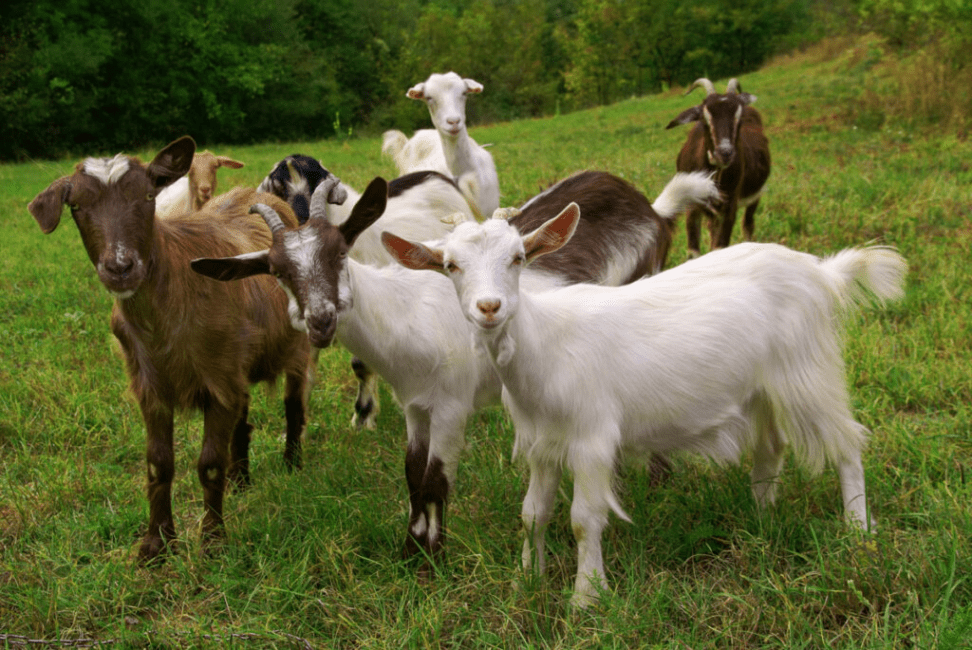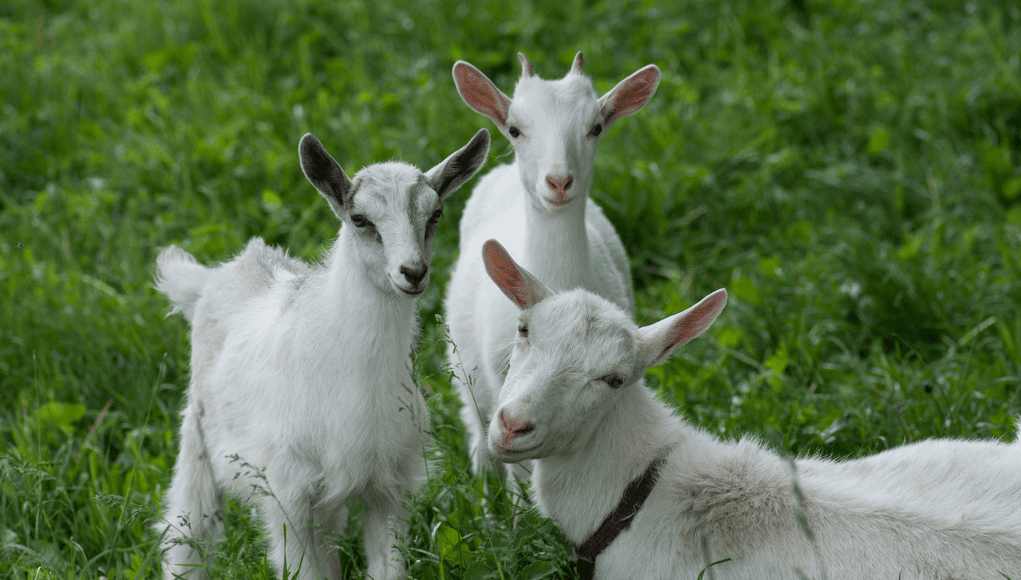Effective production of sheep and goats for either meat hides skin, or milk is affected by the occurrence of desirable traits in the breeding stock and the management of the animal to sustain such traits in the flock.
Improper handling or management may spell doom for such productive enterprise. Therefore in this article, we shall study how breeding stock and young stock are managed for effective production.
Management of Ram
Management of ram is very crucial to breeding and indeed the entire production of a sheep farm. If poorly cared for, ram attains puberty at a prolonged age. Normally, a well-managed ram in terms of adequate feeding, watering, and health care attains puberty at about 6 months of age if under an intensive management system.
The RAM could be older if under the extensive system. Rams must be fed a good mixture of grasses and legumes in addition to which concentrates may be given at about 300 to 500 gm per head per day. The hooves must be adequately trimmed to prevent overgrowth and foot rot. They must be regularly disinfected (every quarter) to prevent external parasites.
Ram for breeding is kept in a separate pen or paddock usually very close to the ewe to stimulate sexual desire. At puberty, sperm production of the ram is usually of low quality hence more mature and older rams must be used for mating. There is a tendency to overuse the ram in an extensive system of production.
However, the acceptable mating ratio of ram to ewe is between 1: 20 and 1: 30. Excess rams on the farm not required for mating are often castrated. Castrated rams are called wether.
Management of Buck
The buck is the male goat. It must attain the age of about 12 to 18 months of age before it is used for mating. Even though it reaches puberty earlier than 12 months it is not advisable to use for mating. The buck should be penned separately to prevent indiscriminate mating.
It must be fed good quality grass and legumes and given concentrate at about 300 to 500 gm of concentrate daily. A good buck can be used for breeding for a period of 4 to 6 years effectively.
The mating ratio in goats is similar to what is obtained in sheep. Bucks that are not being used for mating are usually castrated. Castrated bucks are called bullocks and are fattened for meat.
Management of a Female Sheep or Ewe
A female sheep is called ewe, and they come to puberty at about the age of 6 to 12 months depending on adequate feeding and healthcare. When nutrition is poor, sheep come to puberty as late as about 20 months. Attainment of puberty is related to the body weight of the animal and breed.
Large breeds have been shown to reach puberty much later than small breeds. The moment a ewe is selected for breeding, it must be separated and not allowed to run with rams to avoid indiscriminate mating. Apart from nutrition, the reproductive life of
sheep is also influenced by photoperiod or day length or season, particularly in the temperate region. In the tropics and where there is adequate feeding, this effect does not show as there exists little variation in day length period throughout the year.
The conception rate in ewe can be increased by improving the quality of feed given to the animal which subsequently encourages ovulation. This process is called flushing. It may require putting the female animal on a lush green pasture with quality concentrate a month before mating.
A female sheep comes to oestrus or heat from 6 months of age and thereafter heat re-occurs every 15 to 17 days. Ewe must not be allowed to mate at the first oestrus. Oestrus lasts 20 to 42 hours in sheep. The heat signs are similar to what you have learned for cattle.
Read Also Housing in Sheep and Goat Production
Management of a Female Goat or Doe

A female goat is called doe, and they come to puberty at about 6 months of age given good nutrition and healthcare. Breeding in goats is also affected by photoperiodism i.e. the influence of daily circle of light and darkness on the physiology and behavior of an animal. The reproductive activity is influenced by the shortening length of the day.
However, because there is not much variation in the day length in the tropics the effect is not very pronounced as experienced in the temperate regions.
A doe can be mated or serviced from about 12 months of age. It comes to oestrus as from 6 months old and the oestrus lasts 24 to 36 hours every 18 to 21 days.
Like the sheep, a doe must not be allowed to mate at first oestrus. Conception rate can be increased by flushing the doe as for the sheep. The heat signs are similar to what you have learned for cattle.
Management of Pregnant Ewe and Doe
After mating, the ewe or doe must be separated from the flock and kept in individual pens or monitored to ensure safety to prevent abortion. The ram or buck must not be allowed to run with the females again if on pasture. They must be grazed on separate paddocks or the prepuce of the penis tied to the scrotum to prevent aggressive mating from the males.
Ewes must be well fed with good grass-legume mixtures with minerals as supplements in the form of block multi-nutrients if available. Concentrates of about 200 to 600 g per day may be given toward the latter part of pregnancy (6 to 8 weeks) to provide extra nutrients for the developing fetus.
The gestation period of an ewe is 140 to 150 days ( 21 to 22 weeks) which is similar to that of a doe. On average the gestation period in sheep and goats is about 5 months. With this, an ewe or doe can give birth at least once a year or thrice in two years. The act of giving birth in sheep is called “lambing” while it is “kidding” in goats.
Read Also Major Production Constraints of Cattle
Lambing or Kidding
Lambing or kidding is defined above as it concerns sheep and goats. Ewes does demonstrate essentially the same characteristics when giving birth. Towards the end of pregnancy, the udder of the animal swells and becomes larger. The ewe or doe becomes restless, bleats and there is a hollow appearance on the flank region of the loin.
Some watery discharge that is opaque and yellowish is observed from the vulva and the animal chooses a secluded place to give birth. The parturition process is completed within two hours.
The animal could be assisted if in distress or invited to a veterinarian especially if the fetus’s position is abnormal. The normal position is when the lamb or kid comes out with the head resting on the foreleg coming out first from the vagina.
The dam cleans up the lamb or kid by licking the mucus from the body and stimulating the lungs to respire in some cases. The young animal after some time begins to show signs of hunger and thereafter sucks the dam.
Management of Lamb/Kid
Under extensive management, the dam (i.e. the female parent) and the baby (lamb or kid) are allowed to run together and penned together. The lamb or kid depends on the dam’s milk for the early part of its life and begins to nib on grasses or forage from about 3 weeks of age which helps stimulate the rumen. If penned and separated, dry forage mixtures such as hay are introduced to the young ones in addition to milk replacers.
The young animals can be allowed to creep diets or graze, which is a design where young animals have access to good quality feed usually concentrates through small openings not big enough to allow the dam to eat it up.
The lamb or kids are weaned at about 6 to 8 weeks after birth. Weaning at about 6 weeks is called early weaning. At this stage, the animals are separated. Those for breeding are separated from those for fattening or and maintained as growers.
Management of Growing Sheep/Goats
After the separation of the breeding stock, the remaining animals may be categorized either as fatteners or growers. Fatteners are often given bulk feeding to assist in fast weight gain for slaughtering. They are usually kept in a pen or restricted paddocks. The growers are also kept and
reared together. In this case, the male must have been castrated and reared for meat.
In summary, male animals either buck or ram must be taken care of in terms of adequate provision of feed and healthcare to attain puberty and be ready for use in mating in good time and the female viz, doe, or ewe must also be well managed for the early onset of oestrus at puberty.
The gestation period in cows is an average of 283 days, while it is an average of 150 days in sheep and goats also reproduction is affected in sheep and goats by day length period which is not very pronounced in the tropical climate.
Read Also Background to Water Security and Threat to Water Security

